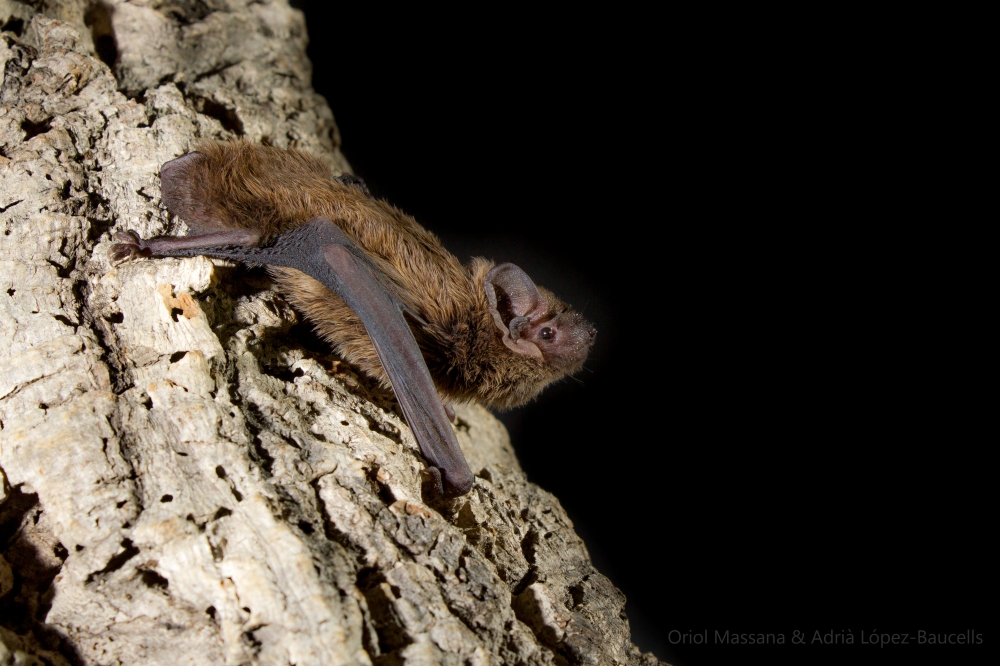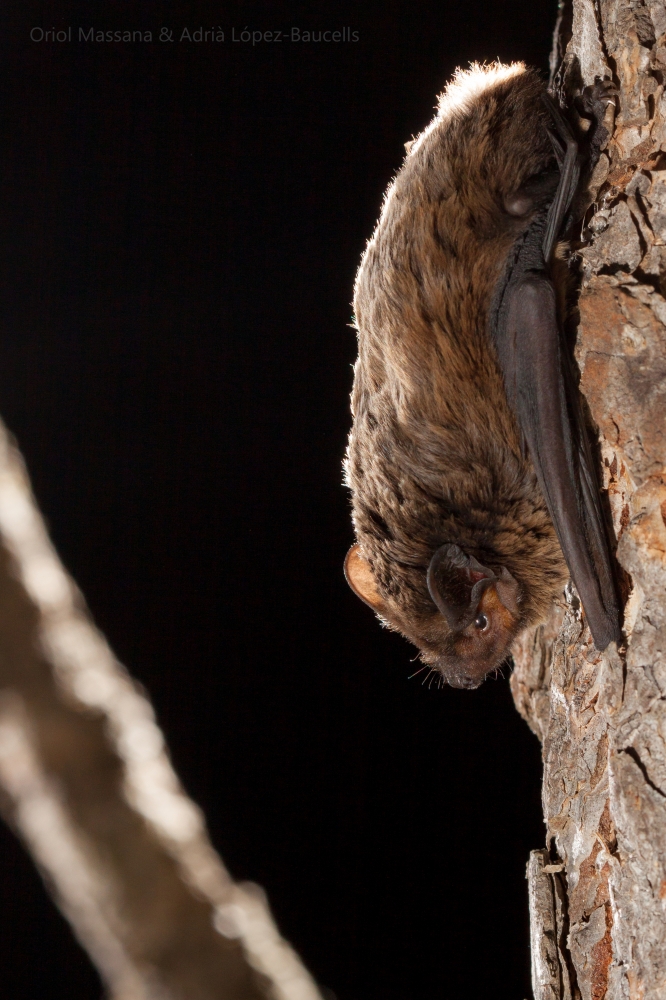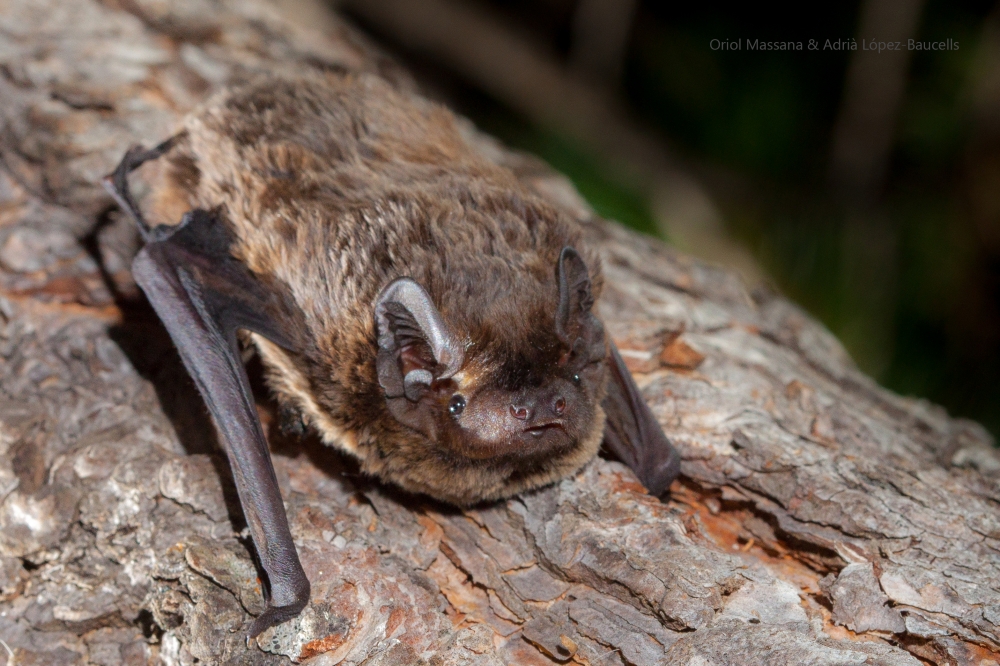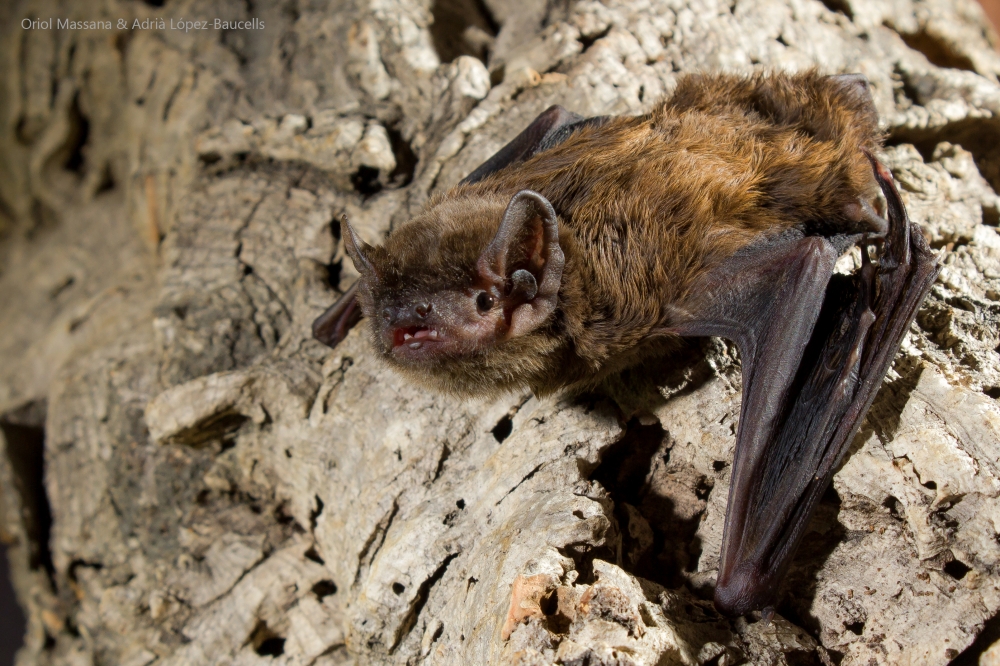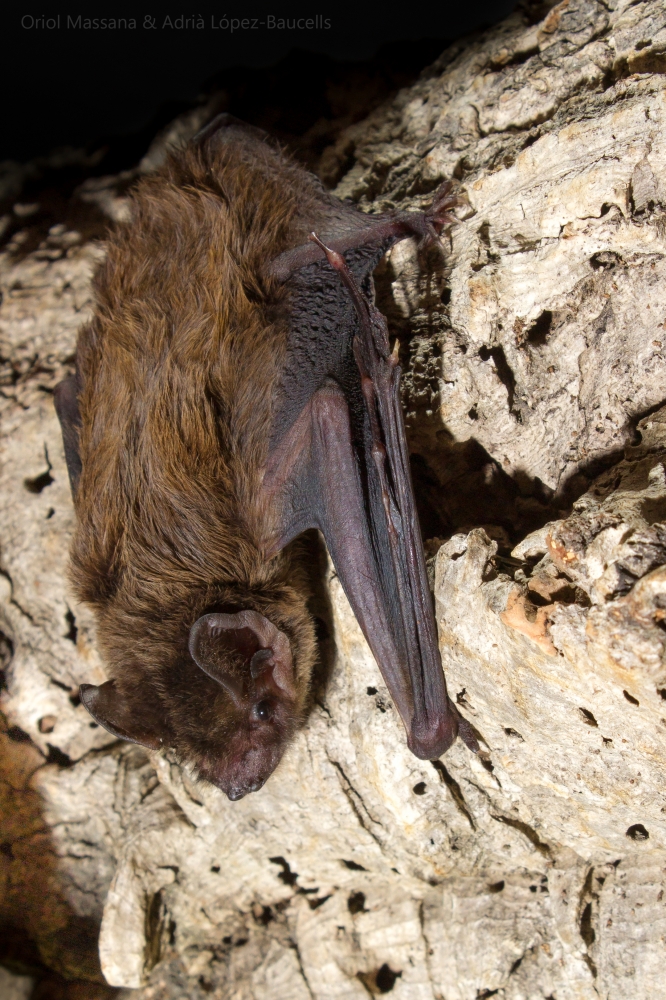Leisler's bat
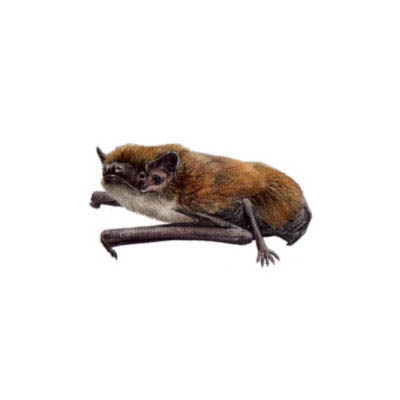
Nyctalus leisleri (Kuhl, 1818)
Vespertilionidae
Least Concern
| Other names | |
|---|---|
| Catalan | Nòctul petit |
| Spanish | Nóctulo pequeño |
| English | Leisler's bat |
| French | Noctule de Leisler |
| Basque | Gau-saguzar handi |
| Galician | Morcego de Leisler |
Description
A medium-sized bat species, with a total body length ranging from 48 to 70 mm, a forearm length between 37 and 47 mm, a wingspan ranging from 260 to 340 mm, tail between 35 and 48 mm, and a weight between 11 and 20 g. Females are usually slightly larger than males. Like all noctules, it is characterized by a short and robust snout, relatively small (12 to 16 mm) and rounded ears, and a short, rounded, and wide tragus with a kidney-shaped form. The wing membranes, as well as the ears and skin, are dark brown, although the base of the ears is usually lighter. The fur is generally dense, shiny, and bicolored, dark at the base, while the tips are reddish-brown. In the fall, the fur is darker than in the summer. It has long and narrow wings that allow for a fast, straight, and rapid flight of up to 56 km/h.
It is distinguished from other members of the Nyctalus genus by its small size and generally darker fur.
Fotografies
Distribution
It is distributed throughout virtually all of Europe, although with significant territorial differences in population density. In the north, it reaches Ireland, England, the south of Scotland, and the south of Sweden. To the south, it is found in the Iberian Peninsula, Italy, the Balearic Islands, Corsica, Sardinia, Greece, and Crete. To the east, it extends to the Urals, the Caucasus, central China, and India. There are isolated populations in the Canary Islands (Las Palmas and Tenerife) and Madeira. In northern Africa, there are also some scattered populations in Morocco and Algeria.
Roosts and phenology
Roosts are typically found in forested areas, occupying holes and crevices in trees, as well as holes left by fallen branches. They prefer natural cavities over those formed by woodpeckers. Refuges are usually selected at heights between 9 and 26 meters, with an average height of 18-19 meters, typically in beech and oak trees. Summer roosts can change almost daily. Specifically in Ireland, the Canary Islands, and Madeira, as well as in some locations in Germany, colonies are found under the roofs of buildings. They are very rarely found in rock crevices. Breeding colonies usually consist of about 20 to 50 females. In a building in Ireland, a breeding colony of about 1,000 individuals was found. Males form small groups of about 12 individuals. They can share roosts with a wide variety of species such as the noctule bat (Nyctalus noctula), Nathusius' pipistrelle (Pipistrellus nathusii), Daubenton's bat (Myotis daubentonii), Natterer's bat (Myotis nattereri), or Bechstein's bat (Myotis bechsteinii). Normally, two pups are born in June, although in Ireland and England, usually only one.
It is one of the long-distance migratory bat species in Europe, with six records of flights over 1,000 km and three over 1,500 km. Females undertake the longest migrations, spending winter in southwestern Europe and breeding in the northeast. A female captured in the fall in northern Spain had traveled 1,567 km in a straight line from the point where it was marked in Germany. Males make shorter movements between wintering and passage areas, and some populations may be resident. Mating occurs from late July to September in mating groups. These harems consist of one male and up to 10 females, attracted by emitting courtship songs while flying or, more rarely, from the refuge itself. In winter, they also take refuge in tree cavities and buildings.
Habitat and diet
It can be found in a wide variety of forest habitats, from sea level to 2,000 meters in altitude. Although considered a forest species, it has also been found in park areas, aquatic ecosystems, and urban areas, always using tree cavities or buildings for shelter. In central Europe, it is often found in mixed beech forests, in the Mediterranean in oak forests, and in the Canary Islands and Madeira in subtropical laurel forests. It shows a clear preference for mature forests with large trees. The hunting areas are clearly forested and in vegetated margins of fields, as well as in livestock pastures in deforested areas such as the British Isles.
The diet of this species is primarily composed of nocturnal lepidopterans, but also includes dipterans and caddisflies. In Ireland and England, small beetles and flies make up almost half of the diet. When hunting in aquatic habitats, chironomids and mosquitoes form the majority of prey. In May and June, they take advantage of the massive emergences of certain insect species. The flight is very fast and straight, and they hunt both above and below the canopy of trees, as well as along forest paths and over bodies of water, as well as around artificial lighting. In the fall, active individuals can be seen before dusk, and in the Canary Islands and Madeira, they remain active throughout the winter.
Echolocation
Their echolocation is characterized by having calls with a highly modulated first part (FM) followed by a second component of the call of nearly constant frequency (QCF), with maximum energy frequencies between 23-31 kHz, usually around 25 kHz. The duration of the calls is typically 9 to 14 ms. It is easily confounded with other noctules, as well as with species of the Eptesicus and Vespertilio genus, which is why it is included in the phonic group Eptesicus/Nyctalus/Vespertilio.
Status
According to the IUCN Red List, it is considered Least Concern, with an uncertain population trend. This species is protected in different countries by national legislation, as well as by the Eurobats agreement, the Bern Convention, and the European Habitat and Species Directive. For this species, the main threats are the loss of hunting and roost habitats due to deforestation and logging of mature forests, as well as the renovation of buildings where colonies are located. It has been observed that during migration, wind farms cause significant mortality.
